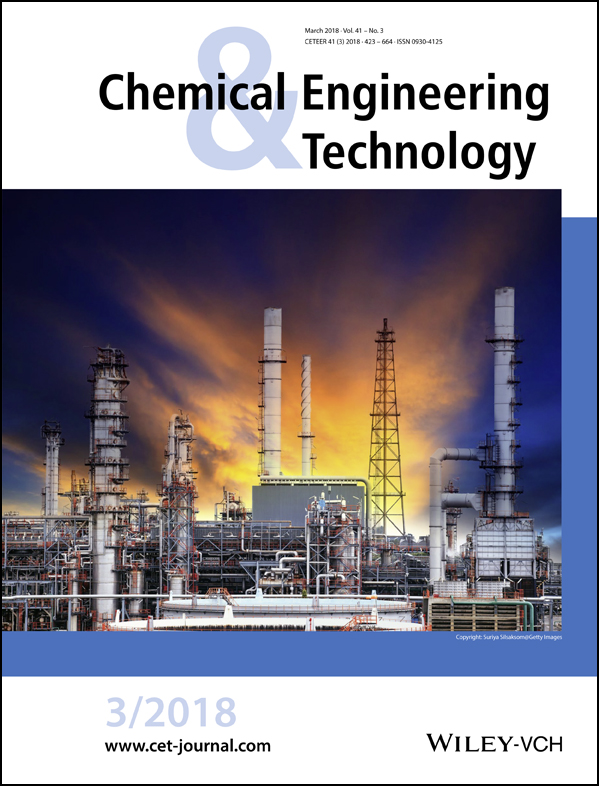Hydrogen Production from Co-Gasification of Coal and Biomass in the Presence of CaO as a Sorbent
Corresponding Author
Wei Gao
Yunnan Normal University, School of Information Science and Technology, Juxian Street, 650500 Kunming, China
Correspondence: Wei Gao ([email protected]), School of Information Science and Technology, Yunnan Normal University, Juxian Street, 650500 Kunming, China.Search for more papers by this authorLi Yan
Honghe University, School of Engineer, Xuefu Street, 661100 Mengzi, China
Search for more papers by this authorMohammad Tahmoures
University of Tehran, College of Agriculture & Natural Resources, Daneshkadeh Ave., 7787131587 Karaj, Iran
Search for more papers by this authorAmir Hossein Asgari Safdar
Islamic Azad University, Young Researchers and Elite Club, Baft Branch, University Boulevard, 7851833987 Baft, Iran
Search for more papers by this authorCorresponding Author
Wei Gao
Yunnan Normal University, School of Information Science and Technology, Juxian Street, 650500 Kunming, China
Correspondence: Wei Gao ([email protected]), School of Information Science and Technology, Yunnan Normal University, Juxian Street, 650500 Kunming, China.Search for more papers by this authorLi Yan
Honghe University, School of Engineer, Xuefu Street, 661100 Mengzi, China
Search for more papers by this authorMohammad Tahmoures
University of Tehran, College of Agriculture & Natural Resources, Daneshkadeh Ave., 7787131587 Karaj, Iran
Search for more papers by this authorAmir Hossein Asgari Safdar
Islamic Azad University, Young Researchers and Elite Club, Baft Branch, University Boulevard, 7851833987 Baft, Iran
Search for more papers by this authorAbstract
Among the options for clean energy production, the gasification process is receiving increasing attention as it offers the best combination of investment and value of produced electricity compared to other methods. An Aspen Plus model of co-gasification of biomass and coal with in situ CO2 capture was developed to evaluate its potential for hydrogen production and cracking of organic impurities, i.e., tars. The effects of some critical operational variables on gas composition and yields of hydrogen gas and tar were investigated. The obtained results indicate that the fuel particle size plays a minor role in the process; smaller particles favor the conversion of tar and production of more hydrogen gas.
References
- 1 M. B. Nikoo, N. Mahinpey, Biomass Bioenergy 2008, 32, 1245–1254.
- 2 P. Cui, Z. Mai, S. Yang, Y. Qian, J. Cleaner Prod. 2017, 142, 2218–2226.
- 3 J. Blamey, M. Zhao, V. Manovic, E. J. Anthony, D. R. Dugwell, P. S. Fennell, Chem. Eng. J. 2016, 291, 298–305.
- 4 H. D. Lasa, E. Salaices, J. Mazumder, R. Lucky, Chem. Rev. 2011, 111, 5404–5433.
- 5 P. McKendry, Bioresour. Technol. 2002, 83, 55–63.
- 6 B. Lai Fui Chin, S. Yusup, A. Al Shoaibi, P. Kannan, S. Anwar Sulaiman, J. Cleaner Prod. 2014, 70, 303–314.
- 7 L. Wang, Y. Jia, S. Kumar, R. Li, R. Mahar Bux, M. Ali, I. Nazir Unar, U. Sultan, K. Memon, Appl. Therm. Eng. 2017, 112, 1601–1611.
- 8 P. Burmistrz, T. Chmielniak, L. Czepirski, M. Gazda-Grzywacz, J. Cleaner Prod. 2016, 139, 858–865.
- 9
F. Miccio, G. Ruoppolo, S. Kalisz, L. Andersen, T. J. Morgan, D. Baxter, Fuel Process. Technol.
2012, 95, 45–54.
10.1016/j.fuproc.2011.11.008 Google Scholar
- 10 W. X. Peng, Z. Liu, M. Motahari-Nezhad, M. Banisaeed, S. Shahraki, M. Beheshti, Energy 2016, 109, 1139–1147.
- 11 L. Wei, S. Xu, L. Zhang, J. Liu, C. Liu, S. Liu, Energy Fuels 2008, 22, 1997–2004.
- 12 H. Long, W. Qinhui, L. Zhongyang, R. Nai, D. Guangyi, Appl. Energy 2013, 109, 36–43.
- 13 C. F. Yan, E. Y. Hu, C. L. Cai, Int. J. Hydrogen Energy 2010, 35, 2612–2616.
- 14
S. M. Beheshti, H. Ghassemi, R. Shahsavan-Markadeh, Environ. Technol.
2015, 36, 1327–1333.
10.1080/09593330.2014.988185 Google Scholar
- 15 G. Liu, E. D. Larson, Energy Procedia 2014, 63, 7315–7329.
- 16 G. Liu, E. D. Larson, R. H. Williams, X. Guo, Energy Fuels 2015, 29, 1830–1844.
- 17 Q. Miao, J. Zhu, S. Barghi, C. Wu, X. Yin, Z. Zhou, Renewable Energy 2013, 50, 655–661.
- 18 G. Schuster, G. Löffler, K. Weigl, H. Hofbauer, Bioresour Technol. 2001, 77, 71–79.
- 19 P. Natarajan, R. Velraj, R. V. Seeniraj, Ind. J. Chem. Technol. 2006, 13, 247–254.
- 20 J. Adánez, P. Gayán, F. García-Labiano, L. F. de Diego, Powder Technol. 1994, 81, 259–268.
- 21 D. Kunii, O. Levenspiel, Powder Technol. 1990, 61, 193–206.
- 22 P. Morf, P. Hasler, T. Nussbaumer, Fuel 2002, 81, 843–853.
- 23 P. Sun, J. R. Grace, C. J. Lim, E. J. Anthony, Chem. Eng. Sci. 2008, 63, 47–56.
- 24 Z. A. El-Rub, E. A. Bramer, G. Brem, Fuel 2008, 87, 2243–2252.
- 25 L. Abdelouahed, O. Authier, G. Mauviel, J. P. Corriou, G. Verdier, A. Dufour, Energy Fuels 2012, 26, 3840–3855.
- 26 H. Guoxin, H. Hao, Biomass Bioenergy 2009, 33, 899–906.
- 27 M. W. Seo, J. H. Goo, S. D. Kim, S. H. Lee, Y. C. Choi, Energy Fuels 2010, 24, 3108–3118.
- 28 M. P. Aznar, M. A. Caballero, J. A. Sancho, E. Frances, Fuel Process. Technol. 2006, 87, 409–420.
- 29 S. Rapagna, N. Jand, A. Kiennemann, P. U. Foscolo, Biomass Bioenergy 2000, 19, 187–197.
- 30 J. J. Hernández, G. Aranda-Almansa, A. Bula, Fuel Process. Technol. 2010, 91, 681–692.
- 31 P. Lv, Z. H. Xiong, J. Chang, C. Wu, Y. Chen, J. Zhu, Bioresour. Technol. 2004, 95, 95–101.
- 32 I. Narvaez, A. Orio, M. P. Aznar, J. Corella, Ind. Eng. Chem. Res. 1996, 35, 2110–2120.




